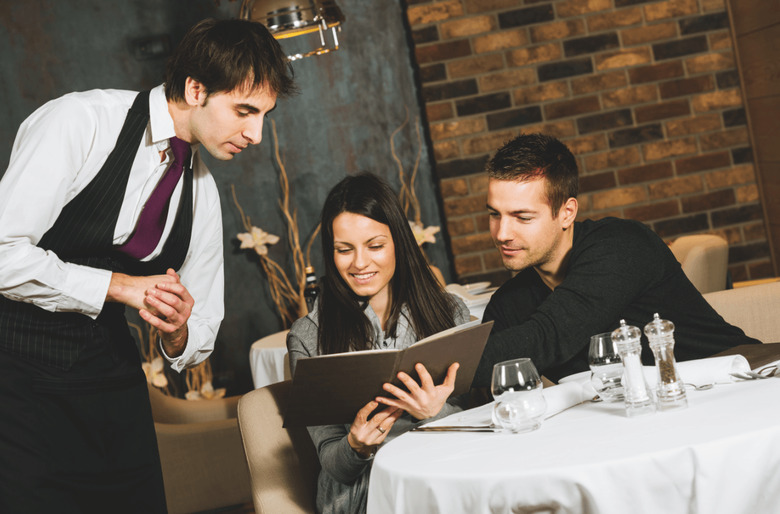Here Are 6 Ways Restaurants Get You To Spend More Money
A restaurant is, above all else, a business; and businesses thrive by making money. From the moment you step in the door to the time you sign the check, restaurants are out to part you with as much of your money as possible, and sometimes the tactics your server uses to get you to spend more money can be a little underhanded. We're not saying that every restaurant goes above and beyond to try to fleece its customers, or that every single server is hell-bent on getting you to order as much expensive wine and superfluous side dishes as possible, but the art of the "upsell" is a real thing. If you're on the lookout for it, you'll be less likely to fall victim to it. Here are six ways servers try to get you to spend more money.
"Still or Sparkling?"
When you sit down, the first question you're asked is what kind of water you want. You're guided toward ordering bottled water (sometimes they don't even give you the option of tap), and those bottles can be expensive. Unless you're someplace where the quality of the water is extremely questionable, you'll be fine with tap.
"Can I Start You Off With a Cocktail?"
Servers usually ask this question within 10 seconds of greeting customers, so diners are unprepared and haven't even had a chance to look over the cocktail list to get a sense of the prices. Ask for some more time: It'll help slow down the pace of the meal and will give you a chance to realize that your martini will set you back $16.
"We Have Some Specials This Evening..."
It's rare that a server will actually tell you the prices of the daily specials, which more often than not are more expensive than most menu items. Always ask the price of a special before ordering it; it might be a lot pricier than you were expecting.
"I would recommend the 2006..."
Restaurants rake in the dough from wine sales, and servers have some sneaky ways to get you to spend more money on wine than you planned. Many diners are too embarrassed to order the least expensive bottle on the list, so they'll opt for the second-least expensive. Restaurants know this, so they tend to place the biggest markup on that very bottle (meaning that its wholesale price very well might be less than the least-expensive bottle).
Power Positioning
The fact that restaurants design their menus with a goal of ripping off their customers is no secret. The National Restaurant Association even provides some sneaky tips on how best to do it right on their website:
"Menu design draws some inspiration from newspaper layout, which puts the most important articles at the top right of the front page. Some restaurants will place their most profitable items or specials in that spot. Elsewhere in the menu, items you want to sell the most should be shown in first and last position. These are typically your biggest sellers, so put careful thought into which items provide your greatest return. Another 'power position' is the inside right page above the center."
Sneaky, sneaky.
"Would You Be Interested in Any Appetizers or Side Dishes?"
Ah, the art of the upsell. It's a subtle way to get you to spend more money under the guise of being helpful. And the power of suggestion is a forceful one: By merely directing you to take another look at the appetizers and side dishes (and forcing you to peruse the dessert menu), there's a good chance that one might catch your eye and you'll be down to drop an additional 15 bucks. Many people also subconsciously aim to please, so it's easier to just say yes to a side dish instead of turning the offer down. It sounds strange, but pay attention the next time a server tries to upsell you: You'll find that you subconsciously want to say yes to everything.
